The pregnancy test is a key tool for women to find out if they are pregnant. It’s a moment that can change your life. Knowing how these tests work is important.
This guide will help you understand pregnancy tests. We’ll cover how they work, the different types, and how to use them. You’ll learn to interpret the results, making this important time easier to handle.
Key Takeaways
- Pregnancy tests detect the presence of human chorionic gonadotropin (hCG), a hormone produced during pregnancy.
- Different types of pregnancy tests, including urine and blood tests, offer varying levels of accuracy and detection timeframes.
- Timing is crucial when taking a pregnancy test, with the best results often obtained after a missed period.
- Proper test usage and understanding of results, including potential false positives or negatives, are essential for reliable outcomes.
- Digital and traditional pregnancy tests each have their own advantages, catering to different preferences and needs.
Understanding How Pregnancy Tests Work
Pregnancy tests look for a hormone called human chorionic gonadotropin (hCG), also known as the pregnancy hormone. This hormone comes from cells in the placenta. It helps feed the egg and support the embryo’s early growth.
The Role of hCG Hormone in Detection
The hCG hormone gets into the woman’s blood and urine. Pregnancy tests use this to see if a woman is pregnant. They check for hCG to tell if a woman is expecting.
Chemical Mechanisms Behind Testing
Pregnancy tests use special antibodies to find hCG. When you take the test, the sample goes on the test strip. If hCG is there, the antibodies bind to it. This shows a positive result on the test.
Detection Timeframes After Conception
- Urine tests can find hCG as early as 8-10 days after conception. Blood tests can spot it even sooner, around 6-8 days.
- The hCG level doubles every 2-3 days in early pregnancy. So, taking a test too early might show a false negative.
Knowing how pregnancy tests work can make women more confident. It helps them get accurate results and find out about a pregnancy sooner.
Different Types of Pregnancy Tests
Women have many ways to find out if they’re pregnant. They can use urine test strips, digital pregnancy tests, or blood tests. Each has its own benefits and can be confusing to choose from.
Urine test strips are easy to find and use. They check for the hCG hormone in urine, showing if you’re pregnant. These tests are pretty accurate, with a success rate of 97% to 99%.
Digital pregnancy tests are a newer option. They use technology to show “pregnant” or “not pregnant” clearly. They might also tell you how many weeks pregnant you are.
Doctors might suggest a blood test for more accuracy. Blood tests find hCG in your blood, even at low levels. They’re very accurate, with a success rate of up to 99.9%.
Choosing a pregnancy test depends on what matters most to you. Cost, ease of use, and how accurate it is are key. Urine test strips are cheap but less precise. Digital tests and blood tests are pricier but more accurate.
| Test Type | Accuracy | Convenience | Cost |
|---|---|---|---|
| Urine Test Strips | 97% – 99% | High | Low |
| Digital Pregnancy Tests | 99% | High | Medium |
| Blood Tests | 99.9% | Low | High |
Knowing about the different pregnancy tests helps women make the best choice. It’s about finding what fits their needs and preferences.
When to Take a Pregnancy Test
Finding the right time to take a pregnancy test is key. It affects how accurate the results will be. You should think about the best time of day, how long to wait after missing a period, and the risks of testing too early.
Best Time of Day for Testing
The morning is the best time to take a pregnancy test. This is when the hCG hormone is most concentrated in your urine. Testing later in the day might not be as accurate because hCG levels can change.
Optimal Waiting Period After Missed Period
Wait two weeks after missing a period to test. This gives hCG levels time to rise enough to be detected. Testing too soon can lead to false results because hCG levels are still low.
Early Testing Considerations
Some people want to test right away. But early testing can be risky. It might give false results because hCG levels are still changing. It’s better to wait two weeks to avoid confusion and stress.
Knowing when to take a pregnancy test can help get accurate results. This makes the early stages of pregnancy easier to navigate.
| Timing Consideration | Recommendation |
|---|---|
| Best Time of Day | First thing in the morning |
| Waiting Period After Missed Period | 2 weeks |
| Risks of Early Testing | Increased chance of false-negative or false-positive results |
How to Use a Home Pregnancy Test Correctly
Using a home pregnancy test right is key to getting accurate results. The process involves several important steps. By following the test instructions and the manufacturer’s guidelines, you can get reliable results.
First, collect the urine sample correctly. Most tests suggest using your first morning urine. This urine has the highest hCG hormone levels, which shows if you’re pregnant. Always read the instructions and follow the recommended way to collect the sample.
- Read the instructions carefully and follow the manufacturer’s guidelines step-by-step.
- Collect your urine sample, preferably using your first morning urine.
- Dip the test device into the urine sample or hold it in the urine stream as directed.
- Wait the specified time for the results to appear, typically ranging from 1 to 5 minutes.
- Interpret the results according to the test’s instructions, looking for the presence of a control line and a test line.
It’s vital to pay attention to the test instructions and follow the testing process as recommended. This ensures your home pregnancy test gives you accurate information about your pregnancy.
Understanding Pregnancy Test Results
Reading the results of a pregnancy test is a big step in starting or growing a family. It’s key to know what a positive or negative result means. You should also be aware of the chance for false results.
Positive Result Interpretation
A positive test means the hCG hormone is found. This hormone shows you’re pregnant. It comes from cells in the placenta, which helps the fertilized egg grow in the uterus.
Negative Result Interpretation
A negative test shows no hCG hormone, meaning you’re likely not pregnant. But, a negative result doesn’t always mean you’re not pregnant. Sometimes, a false negative can happen, especially if the test is too early.
Understanding False Results
- False Positive: A false positive can happen for many reasons. This includes some medicines, fertility treatments, or even recent pregnancy loss. In these cases, the test might show hCG when you’re not pregnant.
- False Negative: A false negative can occur if the test is too early. It can also happen if the test is done wrong or if the test is old or damaged.
It’s important to understand what pregnancy test results mean. This helps you make good choices and get the right medical advice. If you have any doubts or questions, always talk to a healthcare professional.
Digital vs. Traditional Pregnancy Tests
Expectant mothers can choose between digital and traditional pregnancy tests. Each has its own benefits and things to consider.
Digital tests, like those from Clear Blue and First Response, show “pregnant” or “not pregnant” on a screen. This makes results easy to understand without guessing. They also need less urine and show results faster.
Traditional tests, however, use lines to show if you’re pregnant. They might be cheaper but can be harder to read, especially for beginners. The clear display of digital tests helps those who find line tests tricky.
| Feature | Digital Pregnancy Tests | Traditional Pregnancy Tests |
|---|---|---|
| Result Display | Digital display showing “Pregnant” or “Not Pregnant” | One or two colored lines |
| Ease of Use | Straightforward interpretation | May require more experience to interpret results |
| Cost | Generally more expensive | Generally more affordable |
Choosing between digital and traditional tests depends on what you prefer and your budget. Both can give accurate results. Digital tests might be easier for some to use.
Common Causes of False Results
Pregnancy test results are usually reliable. But sometimes, they can show false positives or negatives. It’s important to know why this happens to understand your test results.
Medications Affecting Results
Some medicines, like fertility drugs, can make a test show a false positive. This is because they contain the hormone hCG. Other drugs, like those for cancer or Parkinson’s, and some herbs and supplements can also mess with the test’s accuracy.
Timing-Related Errors
When you take the test too early, it might show a false negative. This is because hCG levels haven’t risen enough yet. On the other hand, an evaporation line can look like a positive result, causing a false positive.
Storage and Handling Issues
How you store and handle pregnancy tests can impact their accuracy. Expired tests or those kept in bad conditions might not work right. Also, touching the test with dirty hands can mess up the chemical reactions.
To get accurate results, always follow the test’s instructions. Take the test at the right time and store the kit properly. If you think the result is wrong, especially if you’re feeling symptoms of ectopic pregnancy or have been taking fertility drugs, see a doctor.
Blood Tests vs. Urine Tests for Pregnancy
Both blood tests and urine tests are important for finding out if you’re pregnant. Home tests use urine, but doctors often do quantitative hCG tests on blood. These tests check the beta hCG hormone levels.
Blood tests are more accurate because they measure beta hCG levels well. This is key in early pregnancy or when tracking hCG levels. Qualitative hCG tests just show if the pregnancy hormone is there, without showing how much.
| Characteristic | Blood Test | Urine Test |
|---|---|---|
| Accuracy | Highly accurate, measuring precise hCG levels | Generally accurate, but may miss very early pregnancies |
| Timing | Can detect pregnancy as early as 8-10 days after conception | Usually detect pregnancy after a missed period, around 14 days after conception |
| Availability | Requires a doctor’s visit and blood draw | Can be purchased and taken at home |
Doctor’s office tests give more detailed info, but home tests are easy and handy. Your choice between blood and urine tests depends on your situation. It might be based on how far along you are or if you need to track hCG levels closely.
Conclusion
Pregnancy tests are key in planning families, prenatal care, and knowing about fertility. They find the human chorionic gonadotropin (hCG) hormone, showing if you’re pregnant. It’s important to use them right and know what the results mean.
If a test says you’re pregnant, it’s true. But if it says no, it might not always be right. If you’re unsure, talk to a doctor. They can help confirm and guide you.
These tests help in planning families. They let people know about their reproductive health. By using them wisely, you can be more involved in your pregnancy confirmation, prenatal care, and family planning. Understanding them helps you make choices that fit your life and family plans.
FAQ
What is a home pregnancy test?
A home pregnancy test is a device used to detect the presence of the human chorionic gonadotropin (hCG) hormone in a woman’s urine. This hormone is produced during pregnancy.
How do pregnancy tests work?
Pregnancy tests detect the presence of hCG. This hormone is produced by cells in the placenta. The placenta nourishes the egg after it has been fertilized and attached to the uterine wall. The tests identify chemical reactions that occur when hCG is present in the urine.
What types of pregnancy tests are available?
There are several types of pregnancy tests available. These include home urine tests, digital pregnancy tests, and blood tests performed by a healthcare provider. Each type has its own features, accuracy, and convenience level.
When is the best time to take a pregnancy test?
The best time to take a pregnancy test is typically one week after a missed period. However, some early detection tests can be taken as early as the first day of a missed period. It’s important to follow the manufacturer’s instructions for the most accurate results.
How to use a home pregnancy test correctly?
To use a home pregnancy test correctly, it’s important to read and follow the manufacturer’s instructions carefully. This includes properly collecting the urine sample, handling the test device, and interpreting the results.
How to interpret pregnancy test results?
Pregnancy test results can be interpreted as positive, negative, or in some cases, inconclusive. A positive result indicates pregnancy, while a negative result means the test did not detect hCG. Inconclusive results may require retesting or further evaluation by a healthcare provider.
What are the differences between digital and traditional pregnancy tests?
Digital pregnancy tests provide a clear “pregnant” or “not pregnant” result. Traditional tests use colored lines to indicate the presence of hCG. Digital tests may be easier to read, but traditional tests are generally more cost-effective.
What can cause false pregnancy test results?
False positive or false negative results can occur due to factors such as certain medications, fertility treatments, timing errors, or improper handling and storage of the test. It’s important to follow instructions carefully and consult a healthcare provider if results are unclear.
When should a blood test be used instead of a urine test?
Blood tests are sometimes recommended in early pregnancy, when monitoring hCG levels, or when a urine test provides inconclusive results. Blood tests can provide more accurate and quantitative information about hCG levels compared to qualitative urine tests.

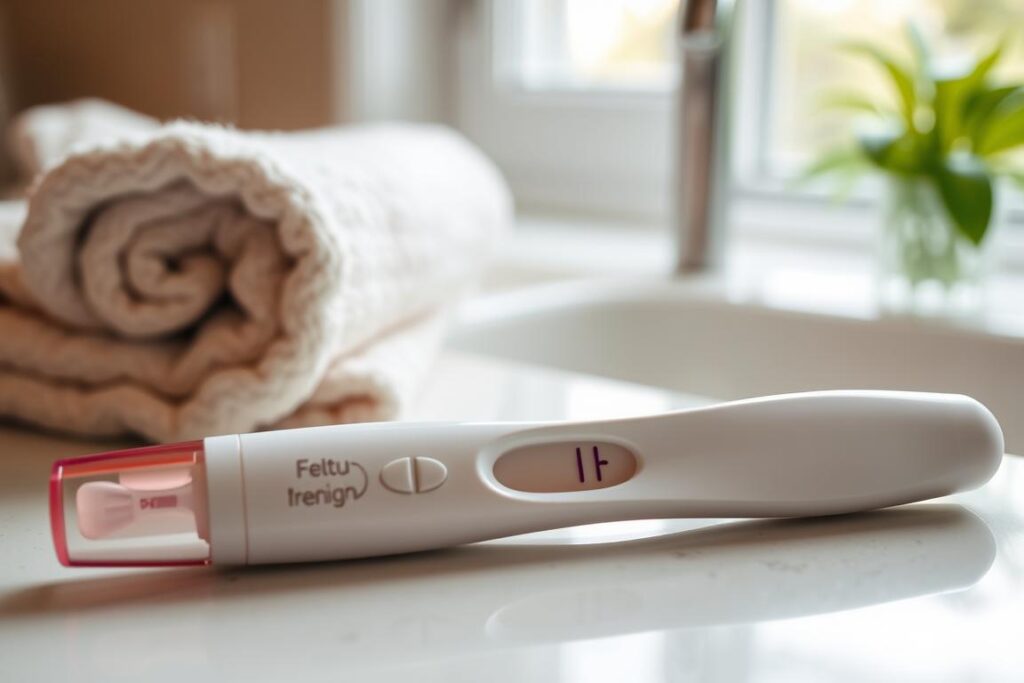

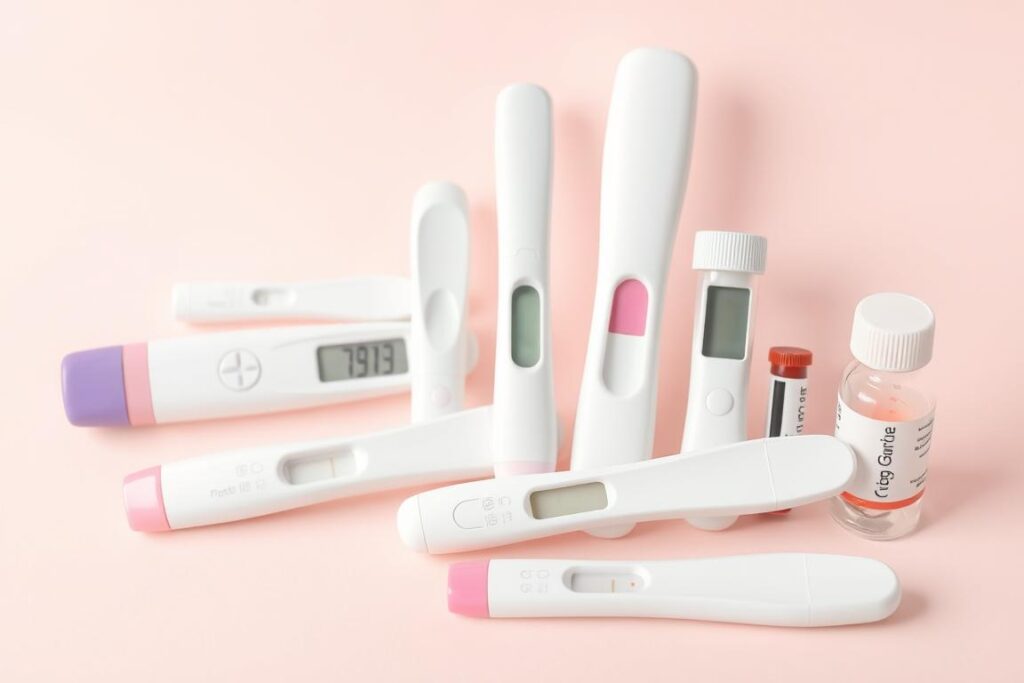
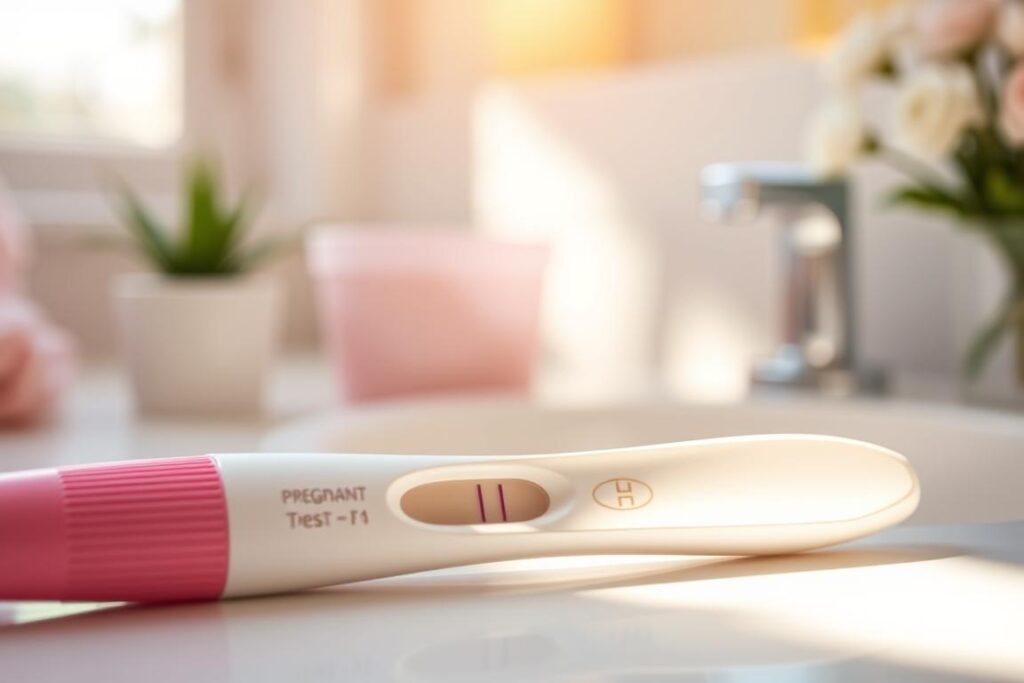
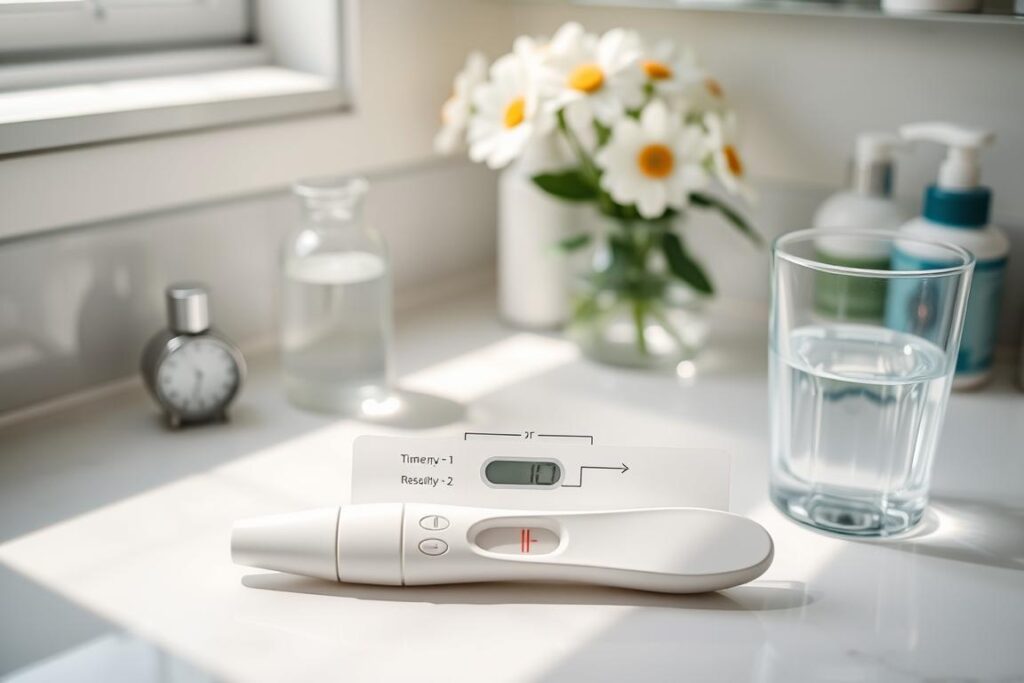





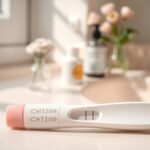
1 thought on “5 Powerful Reasons to Take a Pregnancy Test Today”